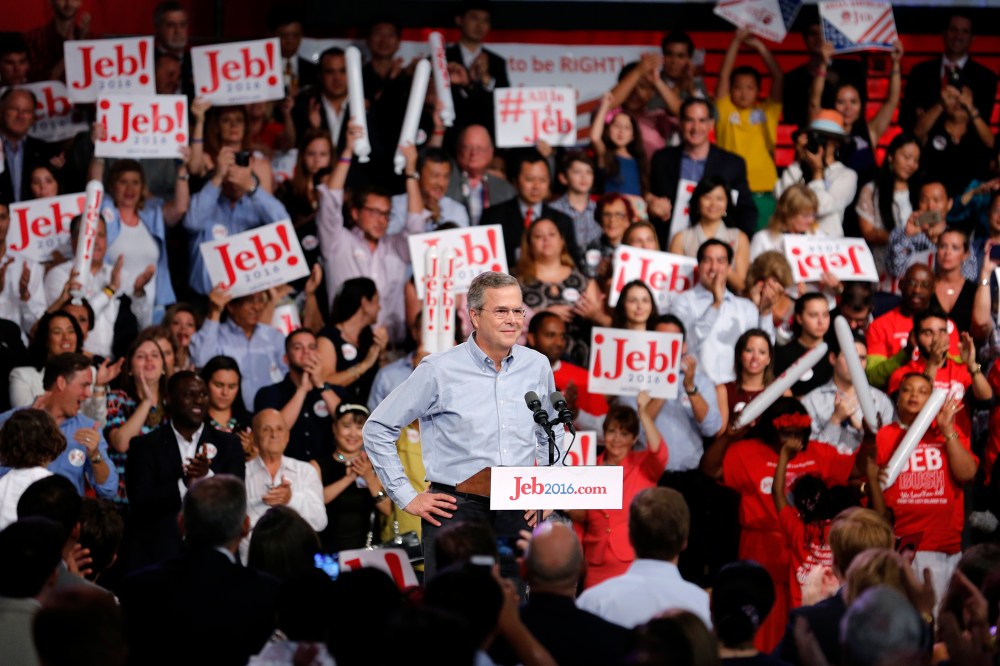What’s the hot new thing to do when launching a presidential campaign? Join Snapchat, of course.
Hillary Clinton and Jeb Bush, two of the early front-runners in the 2016 presidential race, both turned to the popular social messaging app Snapchat recently to document their campaign kickoffs. The app allows users to send photo messages to their friends that last for a few seconds and disappear after being viewed by the receiver. Another feature called “stories” allows users to post Snaps that are viewable to all of their friends, or to the public, for 24 hours after their creation. Then those, too, disappear.
RELATED: How Ted Cruz’s digital team wants to win the Internet in 2016
Bush and Clinton were the first two in the crowded 2016 field to leverage Snapchat’s “live story” feature to aggregate and publicly showcase photos and videos posted by users at their campaign events. Bush held a rally announcing his campaign on Monday, while Clinton, though she had announced her bid in April in an online video, held her first official campaign rally on Saturday. The photos were supplied by those attending the events, then curated and compiled into a “live story” by Snapchat.

On Saturday, Snapchat’s 100 million daily users saw in their feeds a “Hello, Hillary 2016” live story highlighting moments from Clinton’s Saturday rally in Roosevelt Island. On Monday, Snapchat users saw a similar “Campaign 2016” live story with images and scenes from Bush’s announcement event in Miami.
Flashback to 2008, a year when the presidential race was widely hailed as the “Facebook election”— the first in which the popular social networking site played a major role in campaign strategy. Social media, particularly in the form of Facebook, was a key tool in securing Obama’s win with young voters. In the seven years since, social media has evolved at such breakneck speed that Facebook now has 1 billion users, and teenagers are now beginning to leave Facebook in droves in favor of newer sites like Instagram, Snapchat, and Tumblr.
Many new social media apps have appeared on the digital landscape in the seven years since the 2008 election: Instagram, Pinterest, Periscope, and Meerkat are all popular social networks that did not exist during prior presidential races.
But perhaps no platform holds more potential to revolutionize the use of digital technologies in this campaign cycle than Snapchat, the messaging app that has become wildly popular with millennials and teenagers.
Launched in 2011, Snapchat was an instant hit with teenagers, many of whom are conscious of their online footprints, and thus found the app’s ephemeral nature appealing. As the app grew, the company launched the stories feature in 2013, a pivotal point for Snapchat’s growth as it expanded the app’s functions beyond one-to-one messaging and allowed users to broadcast to an audience of followers.
While Bush and Clinton are the first two to make use of Snapchat’s live stories feature, they do not have active personal Snapchat accounts. A number of other candidates have begun to experiment with Snapchat by launching their own accounts, from which they can post their own “stories” each day to share with just their followers. Candidates who have established their own Snapchat accounts include Sen. Rand Paul, Sen. Marco Rubio, former Maryland Gov. Martin O’Malley, and former Texas Gov. Rick Perry.
RELATED: Rand Paul’s Patriot Act social media blitz











